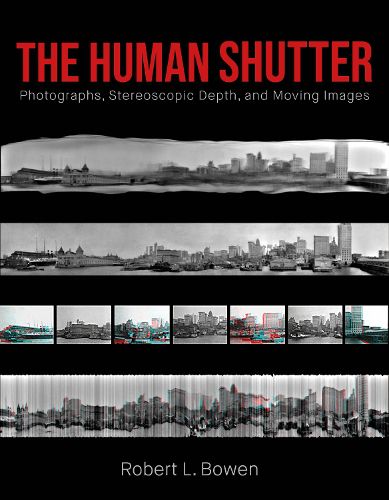Readings Newsletter
Become a Readings Member to make your shopping experience even easier.
Sign in or sign up for free!
You’re not far away from qualifying for FREE standard shipping within Australia
You’ve qualified for FREE standard shipping within Australia
The cart is loading…






New perspectives on photography and binocular vision.
This book explores how binocular rivalry, termed "the human shutter," provokes a reexamination of the standard chronology of cinema. The role of the human shutter is demonstrated here with a preliminary taxonomy of astonishing images excavated from the photographic archive. The book first looks at how photographic stillness, depth, and motion emerged en masse, departing from the gradualist narratives familiar in histories of photography and film. Next, the book addresses the role of binocular vision in the history of painting and photography. It further examines the rich history of early stereoviews that constitute the origins of photographic cinema and other instances of temporality. Last, the work explores what happens after light arrives at the retina, employing the stereoscope as a metaphor for critical thinking.
In addition to these new perspectives, the book contains significant original research on early photographers who explored motion with binocular vision, especially Antoine Claudet and Giorgio Sommer. The volume also takes into consideration the work of modern and contemporary artists and experimental filmmakers who have focused on stereoscopic spaces, including Marcel Duchamp, Robert Smithson, Lucy Raven, Ken Jacobs, Alfons Schilling, Arakawa and Gins, and OpenEndedGroup.
$9.00 standard shipping within Australia
FREE standard shipping within Australia for orders over $100.00
Express & International shipping calculated at checkout
New perspectives on photography and binocular vision.
This book explores how binocular rivalry, termed "the human shutter," provokes a reexamination of the standard chronology of cinema. The role of the human shutter is demonstrated here with a preliminary taxonomy of astonishing images excavated from the photographic archive. The book first looks at how photographic stillness, depth, and motion emerged en masse, departing from the gradualist narratives familiar in histories of photography and film. Next, the book addresses the role of binocular vision in the history of painting and photography. It further examines the rich history of early stereoviews that constitute the origins of photographic cinema and other instances of temporality. Last, the work explores what happens after light arrives at the retina, employing the stereoscope as a metaphor for critical thinking.
In addition to these new perspectives, the book contains significant original research on early photographers who explored motion with binocular vision, especially Antoine Claudet and Giorgio Sommer. The volume also takes into consideration the work of modern and contemporary artists and experimental filmmakers who have focused on stereoscopic spaces, including Marcel Duchamp, Robert Smithson, Lucy Raven, Ken Jacobs, Alfons Schilling, Arakawa and Gins, and OpenEndedGroup.